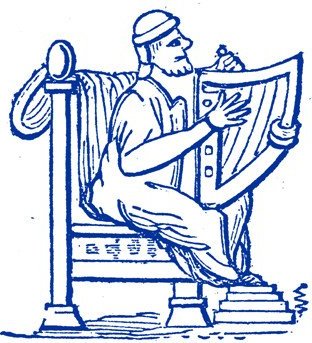
This is a story in search of information about a Belfast-born pianist and composer.
A strange search because, at the outset, none of his music had been traced!
Amongst Irish composers, William Rea was one of the earliest to explore 12-tone techniques, winning a Festival of Britain prize for his Piano Sonata (1950).
In 1952 he was one of four Irish composers chosen by an international panel (Arnold Bax, Jean Martinon and Dag Wirén) on behalf of Ireland’s Cultural Relations Committee to have their submitted works recommended for immediate copying to encourage performances abroad. The three other composers were Brian Boydell, Aloys Fleischmann and Frederick May.
Rea played a key role in 1956 in the search for a national anthem for the about-to-be newly independent Malaysia (31 August 1957).
CONTENTS — Click on whichever heading for a shortcut, or bypass and read straight on ...
INTRODUCTION
I’d been researching the first century of concerts promoted by the BMS (the British Music Society, founded in 1921 and rebranded as the Belfast Music Society for the season 1983/84 onwards) for a series of four essays (see here), when, in a serendipitous moment, I read about the composer William Rea.
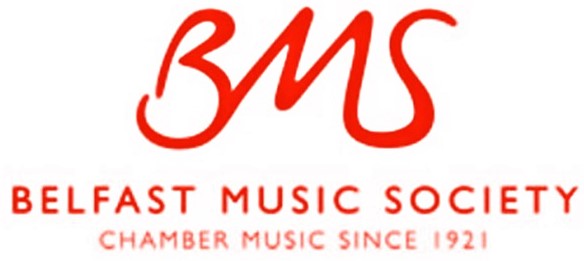
Rathcol, music critic of the Belfast Telegraph didn’t appear to be a fan.
Belfast Telegraph, Wednesday 25 October 1950, page 4
The British Music Society’s ‘Members’ Night’ in the Smyth Hall, Belfast on Tuesday evening was specially notable in bringing to a first hearing some piano music written by a Belfast composer, Mr. William Rea.
This consisted of four pieces — three Improvisations and a Fairy Tale — which were played by the composer himself. Their ‘wrong note’ harmony, it must be confessed, sometimes grated on the ear, and at first seemed merely perverse. They none the less contain some sincerely felt and expressive music which shows considerable power in capturing a specific mood, and the harmonic acerbity even adds to the effect at times, as in the puckish second piece.
The remainder of the programme raised no problems of the same kind and provided a good deal of music that made very pleasant listening. …
This consisted of four pieces — three Improvisations and a Fairy Tale — which were played by the composer himself. Their ‘wrong note’ harmony, it must be confessed, sometimes grated on the ear, and at first seemed merely perverse. They none the less contain some sincerely felt and expressive music which shows considerable power in capturing a specific mood, and the harmonic acerbity even adds to the effect at times, as in the puckish second piece.
The remainder of the programme raised no problems of the same kind and provided a good deal of music that made very pleasant listening. …
I’m not convinced that the uncredited music critic of the Belfast News-Letter was much more receptive!
Belfast News-Letter, Wednesday 25 October 1950, page 4
… The programme of music performed by members was delightfully unusual in character. Most of the items were in duet form, the exceptions being the pianoforte solos of Mr. William Rea …
Mr. Rea gave the first performance of some of his own compositions, Three Improvisations, and Fairy Tale, these showing an imaginative outlook and individual approach to tone colour. The facile playing fell very pleasantly on the ear.
Mr. Rea gave the first performance of some of his own compositions, Three Improvisations, and Fairy Tale, these showing an imaginative outlook and individual approach to tone colour. The facile playing fell very pleasantly on the ear.
Both reviews may be read in full in the PDFs on the right. They’re of interest because of the mentions of other locally-based musicians, including Evan John, Mary Johnston, Ivor Keys and Havelock Nelson.

|
BMS reviews 1950 William Rea.pdf Size : 180.817 Kb Type : pdf |
An internet search provided a further gem: a collection of essays, Music History and Cosmopolitanism, edited by Anastasia Belina, Kaarina Kilpiö and Derek B. Scott (Routledge, 2019).
This excerpt is from the chapter entitled Mapping Musical Modernism by Prof. Björn Heile:
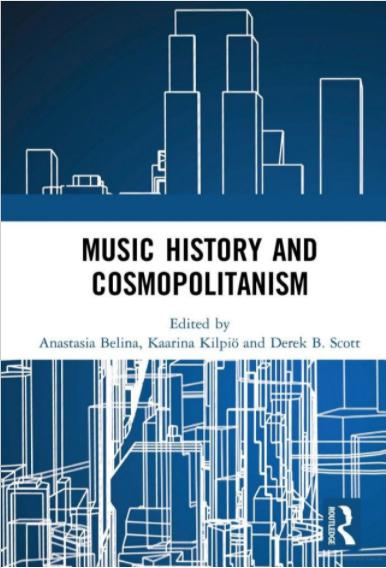
… Finally, my correspondent Jun Zubillaga-Pow managed to track down the Festival of Britain award-winning dodecaphonic Piano Sonata by William Rea, a Belfast-born composer who settled in Singapore (A New Musical Language, 1952; Attenborough, 1952).
As these examples show, there was a wide network of dodecaphonic composers, most of whom operated in relative obscurity and few of whom are recognised in established music histories. Nevertheless, their work is an important aspect of the history of musical modernism. …
As these examples show, there was a wide network of dodecaphonic composers, most of whom operated in relative obscurity and few of whom are recognised in established music histories. Nevertheless, their work is an important aspect of the history of musical modernism. …
The first reference above is to an article authored by ‘Presto’, being an interview with Rea about his use of 12-tone techniques, published in The Singapore Free Press, 23 April 1952, Page 4.
The second reference is to: Attenborough, Islay, 1952. ‘A Composer in Malaya’. Straits Times, Sunday 17 February 1952, p. 10. Both articles add significantly to our knowledge about Rea and they are reprinted farther down on this webpage.
The second reference is to: Attenborough, Islay, 1952. ‘A Composer in Malaya’. Straits Times, Sunday 17 February 1952, p. 10. Both articles add significantly to our knowledge about Rea and they are reprinted farther down on this webpage.
There’s a further closely related online mention for William Rea, also from Prof. Björn Heile.
It’s also entitled Mapping Musical Modernism and is available, in full, here.
From a different perspective, the Belfast-born and largely forgotten William Rea (uncovered by Jun Zubillaga-Pow) can be said to have introduced dodecaphony to Singapore, although there is no certainty of any further compositions after his Piano Sonata from 1950, composed when he was still living in Britain. He appears to have featured dodecaphonic compositions and advocated on their behalf tirelessly, however.
I am grateful to both Prof. Björn Heile and Dr Jun Zubillaga-Pow for their assistance with this composer search.
Some family background
Composer William Rea’s grandfather, also a William Rea (1841-1919), was born in Seagoe, Co. Armagh.
On 7 April 1871 grandfather William married Annie (1846-1902), ‘fifth daughter of the late Mr William Carlisle [1804-1859], Harryville, Ballymena, at Berry Street Presbyterian Church, Belfast, by the Rev. Hugh Hanna’.
Hanna, an evangelical preacher who attracted large crowds, incited sectarian tensions, was renowned as ‘Roaring Hanna’, and opposed the Home Rule Bill in 1886.
The Berry Street congregation moved to the new St Enoch’s Church at Carlisle Circus in 1872 and many years later its organist would be the young William Rea.
St Enoch’s, specially built for ‘Roaring Hanna’ was one of the largest Presbyterian churches in the north of Ireland. It had a magnificent theatre-like interior with two tiers of galleries around three sides. The church stood opposite Carlisle Memorial Methodist Church, but was destroyed by a malicious fire in 1985.
RH pic: St Enoch’s in 1931. Note the statue of ‘Roaring Hanna’ on the plinth on the roadway on the left.
Pic credit: copyright owner not traced as yet.
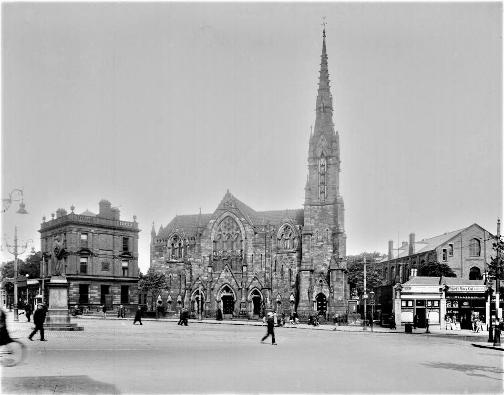
During the 1890s, the Rea family lived on Belfast’s Shankill Road. Grandfather William worked as a ‘cloth-passer’, an inspector or quality controller who would have been respected and maybe even feared by the linen weavers. Presumably he worked for one of the local mills.
He was still listed as a cloth-passer in the 1897 Belfast Street Directory, but around that time, or earlier, he became a missionary connected to Argyle Place Presbyterian Church (originally built in 1864, then replaced by a new build in 1911 and now renamed as West Kirk) on the Shankill Road — just a few doors along from the family home.
The 1901 National Census has the family, with three sons and three daughters now living on the Crumlin Road. The two eldest boys are both listed as watchmakers and finishers.
By the 1911 National Census all three boys were still living at home: Joseph, 34, a watchmaker and finisher; William, 27, also a watchmaker and finisher; and James, 23, a traveller in jewellery. This youngest son, James Rea, in due course would be the father of the pianist and composer William Rea.
Meanwhile, the eldest son Joseph Rea had been running his own business from at least 1898 (later public advertisements state ‘from 1895’) from his home address.
Belfast Telegraph, 5 March 1898, page 1
WATCHMAKER. – Wanted, a practical Man.
Apply at once to J. Rea, 256 Shankill Road.
Apply at once to J. Rea, 256 Shankill Road.
These were the earliest years of what became the well-known Belfast business: Joseph Rea – Jewellers.
Sadly, Joseph died in 1918 and so the business was carried on by his brothers William and James, in Ann Street.
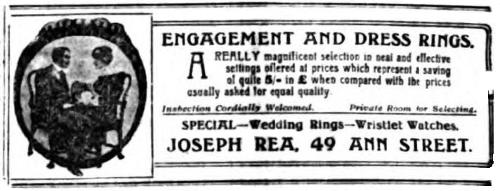
LH pic: Newspaper advertisement from 1915.
For some more details of the Rea family background, see the PDF on the right.

|
Rea family background.pdf Size : 206.704 Kb Type : pdf |
MUSIC EDUCATION
Retracing our steps slightly, the youngest of the three Rea brothers, James (1887-1957) married Mary Jane Macartney (1887-1971) in June 1913. Their son, William Andrew Rea was born in Belfast on 30 March 1914, the first-born of three sons and four daughters.
Young William attended Forth River Public Elementary School on the Cairnmartin Road and then progressed to Methodist College, Malone Road, Belfast.
He left school at 14, as so many did at that time. He would have worked in the family jewellery business had he not become seriously ill in his teenage years with tuberculosis, which kept him at home, presumably practising piano!
There’s a period, 1929-1934, about which we know very little and which was presumably filled with most of his musical education and piano practice.
We do know that William Rea travelled to Bangor for lessons at St Comgall’s Parish Church with its distinguished organist, Dr Ernest Heathcote Emery, a Mancunian who came to Bangor in 1919 after his demobilisation.
Dr Emery (see RH pic) taught class-singing and gave piano lessons
in Bangor Grammar School from 1923 to 1956 (composing its school song
in 1950); he founded the Bangor Operatic Society in 1919 and remained
its musical director for 38 years. He was organist of Bangor Parish from
1919 to 1960 and gave regular organ recitals for the BBC, beginning in
1925 just a few months after the British Broadcasting Company’s Belfast 2BE station opened (September 1924).
RH pic credit: Trevor Gray, History of Bangor Grammar School, 2006, page 92. See here.
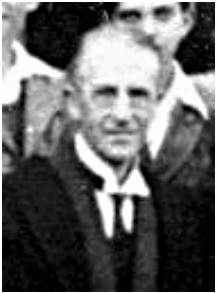
Most interestingly, Dr Emery gave his first BBC piano recital (Brahms - Intermezzo in A, Op.118; Rhapsody in B minor, Op.79; Arensky - Caprice No.6; and Debussy - Reverie and Jardins sous la pluie) on Friday 17 October 1924, just a matter of weeks after the station opening.
Indeed, following from this next press cutting, perhaps William Rea may also have taken piano lessons with Dr Emery.
Lisburn Herald, and Antrim and Down Advertiser, Saturday 28 July 1956, page 4
For many years he [Dr Emery] was best known as a pianist and his frequent recitals from the old BBC studios in Linenhall Street, Belfast, brought him appreciative letters from all over the British Isles. His organ recitals were heard even further afield. He was one of the first organists to play in the newly opened BBC Empire Service in the early ’thirties and it seemed like a miracle, he recalls, when someone wrote to him from the American Middle West saying how well it had ‘come over’. After more than a quarter of a century, Dr Emery’s recitals from Saint Comgall’s are still a regular and much appreciated ingredient of Northern Ireland broadcasting.
The PDF on the right offers a selection of newspaper cuttings about Dr Ernest Emery.

|
Emery, Dr Ernest and more.pdf Size : 250.208 Kb Type : pdf |
Apart from Dr Emery, other candidates for being William Rea’s piano teacher across these years might include the likes of Bertram Jones or Norman Hay. Indeed, there were plenty of Belfast-based teachers to choose from, judged by the annual membership of the Society of Professional Musicians in Ulster, listed annually in the newspapers.
Perhaps Rea was influenced by the articles and books published by one of the leading British pianists at this time, James Ching. Renowned for his many BBC broadcasts, particularly of Bach, and an influential proponent of good teaching and technique, Ching was also a regular visitor to Northern Ireland.
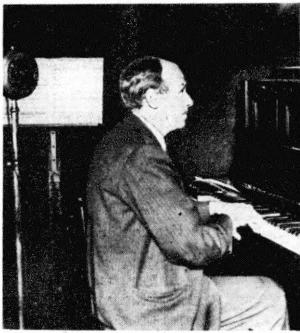
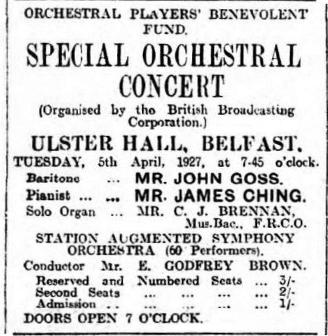
Above: Pic from the Northern Whig, Saturday 9 July 1932, page 1. The caption reads: ‘Mr. James Ching, M.A., the celebrated Pianist, making a Gramophone Record of his own playing at Messrs. Hart & Churchill’s Recording Studio, Wellington Place, Belfast.’
Above: Advertisement from the Belfast News-Letter, Saturday 02 April 1927, page 1
Along with concert appearances in Belfast (e.g. Beethoven
Third Piano Concerto (first and last movements) plus Chopin works from
the Belfast studio on 25 September 1930; and the Delius Piano Concerto
from the Wellington Hall on 6 February 1932), James Ching adjudicated at the
Larne Musical Festival in 1931 and 1932, and he lectured on ‘Pianoforte
Teaching and Playing’ at the Ulster Summer School in Music at
Stranmillis College, also in 1931 and 1932.
The suggestion of James Ching as a potential influence on the young William Rea’s piano-playing came from one of his aunts remembering (or misremembering) that Rea had studied with Ching at the RCM (though Ching didn’t actually teach there). The address of Ching’s Hampstead flat was also recently found in Rea’s address book, though Ching only moved there around 1950.
OK, this is jumping ahead of ourselves, but in January 1951, William Rea, A.R.C.M., advertised in the Belfast Telegraph as a ‘Teacher of Piano Interpretation and Technique (James Ching Method), 18 Cliftonville Avenue’.
Which would seem to have been in competition with Douglas
Brown, husband (and piano-duo partner) of the composer Dorothy Parke.
The newspaper advertisement on the right is from the Belfast Telegraph, Friday 10 October 1947, page 1:
For more about the pianist James Ching (1900-1962), see the website maintained by his daughter Mary Bonnin, here.
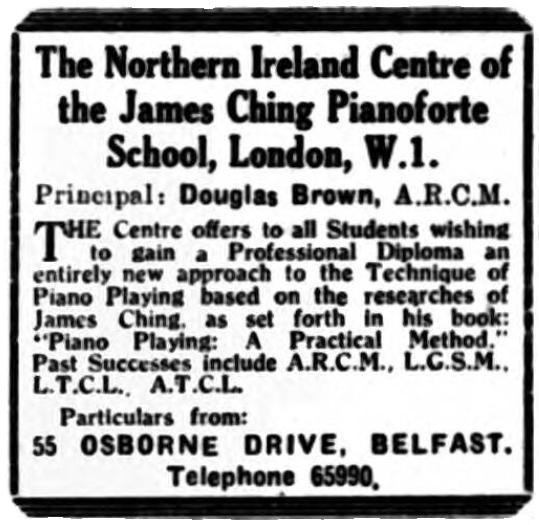
In fact, James Ching and William Rea crossed paths in 1932 at the Larne Musical Festival.
Ching was adjudicating the Intermediate Pianoforte Solo class, age under 18.
There were two test pieces: Brahms’s Capriccio in B minor, Op.76, No.2, and Debussy’s Clair de lune.
There were two candidates: William Rea from Belfast and Betty Finlay from Templepatrick.
The Belfast News-Letter (Saturday 19 March, page 11) reported that ‘Mr.Ching said the standard was hardly high enough. He withheld the first prize [a silver medal], awarding a second and third.’ William Rea received the bronze medal, Betty Finlay received a certificate.
Not the most encouraging start.
The next reference I’ve found to Rea, and a competitive festival, was when Alec Rowley (1892-1958) adjudicated at the Londonderry Feis in 1935.
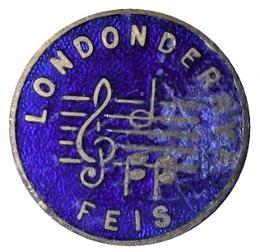
The Derry Journal (Friday 01 March 1935, page 13) reported the results of the Advanced Pianoforte Interpretation for the Doire Cup. Only two prizewinners were listed — perhaps once again there were only two competitors.
First with 166 marks was Miss Margaret M. M. Browne from Belfast who played the Presto from Bach’s Italian Concerto and one of Liszt’s Études de Concert. In second place was Mr. William A. Rea, also from Belfast, with 164 marks. He’d played Brahms’s Rhapsody in G minor, Op.79, No.2, and Bach’s Prelude and Fugue in A flat, No. 41 from the ‘48’.
The Derry Journal noted, ‘Mr. Rowley advised the competitors to let themselves go, stating that this was a quality the English did not possess. If the Irish competitors let themselves go, they would become more brilliant than the average Briton, who hated brilliance because he thought it was not respectable. (Laughter.)’
Meanwhile, thanks to the Ballymena Observer (Friday 23 March 1934, page 9), William Rea was sighted on the homeground of his grandmother (the Carlisles, on his father’s side).
‘Under the auspices of Kells Presbyterian Church Boys’ Auxiliary a delightful variety concert was given in Connor Orange Hall on Thursday last ...’ Alongside the Woodvale Male Voice Choir, a ventriloquist, a conjuror, selections on the piano-keyed accordion and violin, a contralto and a tenor, there were ‘pianoforte selections’ by Mr. William Rea, who also acted as accompanist.
These were busy and formative years. Islay Attenborough, in his interview, ‘A Composer in Malaya’ in the Straits Times, Sunday, 17 February 1952, p. 10, tells the story up to 1935:
In a quiet street in Belfast about 32 years ago, a six-year old boy was running along, looking furtively over his shoulder. Suddenly a ground-floor window shot up and a head came out.
“Bill, come right back here at once. What do you mean running off? You’ve got another hour’s piano practice left. You wait till your father comes home.” But Bill’s heels had already disappeared around the corner and he was fast on the way to Mrs. O’Leary’s sweet shop.
You may say ‘That’s not particularly unusual. Small boys are invariably like that.” This small boy, however, grew up to win the First Prize in the Festival of Britain Competition for Piano Sonatas, and he is now in Singapore with Radio Malaya.
When William Andrew Rea reached the age of fifteen [1929], he changed his mind about the piano and began practising four hours a day. By the time he reached sixteen it was 10 hours a day. He listened to all the classical concerts on the B.B.C. and bought as many classical records as he could afford.
He then began to play the organ and started studying music and composition at home after school with books borrowed from the local library.
Bill Rea was only twenty when he broadcast for the first time. He attended an audition for pianists and came through with flying colours. He was to give a fifteen minute piano recital.
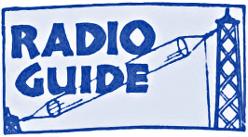
Centre column: Radio Times billing for Northern Ireland regional programme, Monday, 15 April 1935.
Far RH column: Radio Times billing for Northern Ireland regional programme, Monday, 16 September 1935.
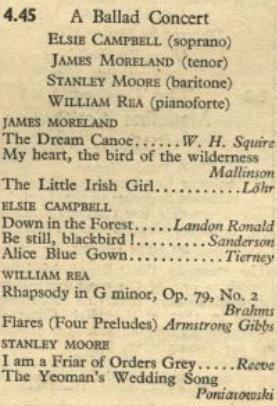
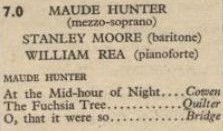
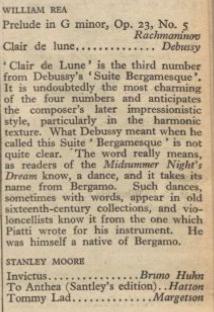
BUILDING AN EMPLOYMENT PORTFOLIO
On 27 September 1935 the Shankill Road Mission Church advertised for a Choirmaster and Organist.
‘Mr. W. A. Rea’ was the successful candidate, listed in the press advertisements for that year’s ‘Carol Service by the Church Choir’.
He was also credited in the press reports of the annual meeting of the Shankill Road Mission congregation: ‘A musical programme [was] arranged by Mr. W. A. Rea, organist and choirmaster [with] the Church Choir, [various soloists] and the Girls’ Club Choir, under Miss K. Simpson.’
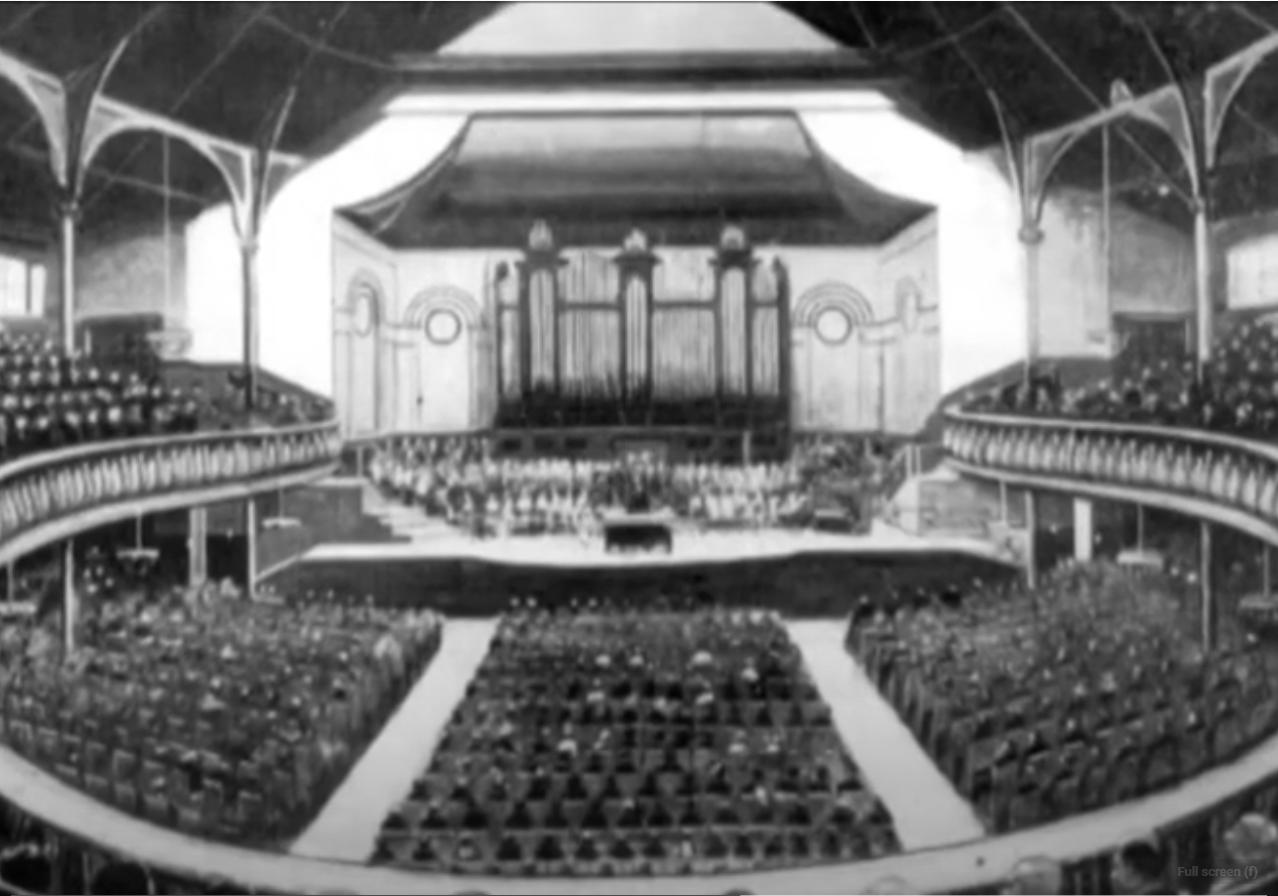
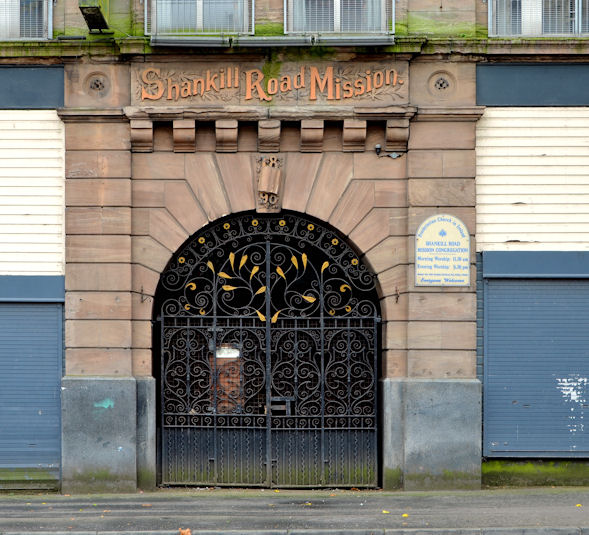
LH pic above:
RH pic above:
Inside the Albert Hall of the Shankill Road Mission with
seating for 2,000. The Hall was opened in 1898 and an organ by the Yorkshire builder James Jepson Binns (1855-1929) installed in 1910.
Doorway of the Shankill Road Mission. Pic © Albert Bridge and licensed for reuse under this Creative Commons Licence.
The PDF on the right has the specification of the Binns organ which William Rea played, plus a potted biography of F.H. Sawyer, the organist of Elmwood Presbyterian Church who helped draw up the specification and played at the organ’s inauguration.

|
Albert Hall new organ 1910.pdf Size : 383.979 Kb Type : pdf |
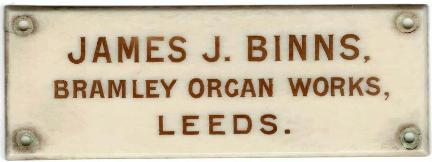
The Albert Hall organ was removed before the hall was demolished c.1982
and it found a new home in the Church of Saints Peter and Paul,
Monasterevin, Co. Kildare. My thanks to Alistair McCartney for
information.
On Saturday 26 October 1935, W.A. Rea and Doris Ritchie were the accompanists for one of that season’s series of municipal concerts in the Ulster Hall: the Warblers’ Concert Party in ‘A Night Out’. It included a miniature revue by students of the Gardner School of Dancing, and organ selections played by the city organist, Capt. C.J. Brennan.
On Friday 27 December, two months later, the Belfast Telegraph critic (not signed, but likely Rathcol, a.k.a. Dr Norman Hay) enthused on page 5 about a Boxing Day concert given to ‘a big crowd’ in the Wellington Hall by the Excelsior Male Voice Choir, conducted by J. Crossley Clitheroe. The choir proved ‘itself one of the best in Ulster and one that should be heard in public more frequently than it is. The repertoire is wide and varied and the singing has charm and distinction’.
Also taking part was the Belgravia Male Voice Quartet, and Miss Evelyn Gibb — ‘Ulster’s leading soprano at the moment’. The critic continued, ‘There has not been in Ulster for some years a more pleasing tenor than Mr James Johnston. His songs last evening were delightful.’
The review ended: ‘Mr. William A. Rea, the accompanist of the evening, is a young Belfastman, whose playing throughout was marked by beautiful technique and skilled understanding.’
Another of John Crossley Clitheroe’s choirs, the Oriana Singers, ‘made one of their rare appearances in the Irish-American Hall, Belfast’ on Wednesday 5 February 1936. The Belfast News-Letter critic was suitably impressed the following morning (page 9) and mentioned the soloists, Miss Evelyn Gibb, Mr Hooton Mitchell and Miss Lucy Young, who deputised at the last minute for Miss Nora Kirkwood. The final paragraph reads:
One of the features of the concert was the pianoforte playing of Mr. William Rea. In this young pianist Belfast has a soloist of real ability. It is safe to say that a great deal more will be heard of him. There was a fairly good attendance, and it is to be hoped that the Oriana Singers will persevere with their good work for there is a definite place for them in the life of this city.
Belfast Telegraph, Thursday 05 March 1936, page 5
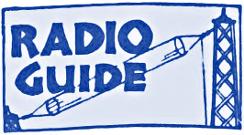
FEATURES OF PROGRAMMES
NORTHERN IRELAND (307.1 METRES)
A concert by the City Y.M.C.A. Male Voice Choir will be heard at 7-15 tonight, the soloists being William Rea (pianoforte) and Harold Holt [sic] (oboe).
Edward Selwyn became the principal oboist of the BBC Symphony Orchestra and had a distinguished career. Harold Holt played oboe and cor anglais with the 2BE Orchestra in 1925 and 1926 — not to be confused with the impresario of the same name. Holt was probably replacing Selwyn at short notice.
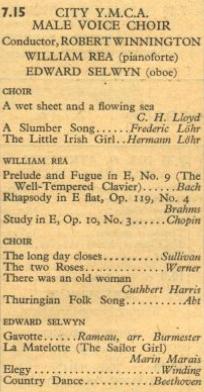
William Rea’s work at the Shankill Road Mission continued with normal church services, special music for the annual congregational meeting in February, the Children’s Choir in May, and the carol service at Christmas.
‘W.A. Rea’ was listed as the accompanist for the musical contributions (which included some by the Shaftesbury Male Quartet) during the Jubilee meeting of the Belfast and North of Ireland Branch of the Commercial Travellers’ Christian Association, held on Saturday, 4 December 1937 in the Presbyterian Hostel, Howard Street, Belfast.
Was Rea tempted by the press advertisements in May 1936 for an organist and choirmaster for St Enoch’s Church?
Its much-respected and long-standing organist George Lilley had accepted the organist’s job in May Street Presbyterian Church. It was surely too soon to apply; not least, because he needed to supply qualifications, testimonials and state the salary he expected!
In the event, St Enoch’s appointed William Blackburn A.T.C.L.
For whatever reason, that appointment didn’t last for more than a year. Then came this advertisement:
Belfast Telegraph, 21 September 1937, page 1
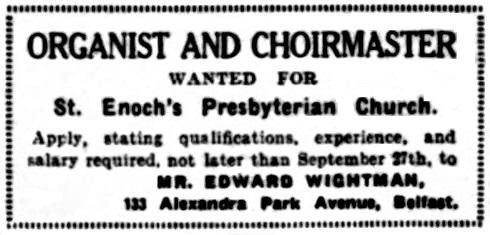
Qualifications? William Rea had gained experience — broadcasts, church services, concerts, good reviews ... but he lacked some letters after his name.
Nonetheless he got the job. Perhaps he’d given an undertaking about those qualifications, for he set about working for his A.R.C.M., in teaching rather than performance. His son remembers that ‘he intended it to be performance but “nerves got the better of him”.’
Newspaper reports of St Enoch’s annual congregational meeting in mid-February 1938 recorded that the Rev. Gordon Young had welcomed ‘Mr. W.A. Rea who succeeded Mr. Blackburn, A.T.C.L., as organist and choirmaster’.
That April, Rea was examined for his A.R.C.M. in piano teaching and ‘was found proficient therein’.
RH pic: William Andrew Rea’s ARCM diploma certificate.
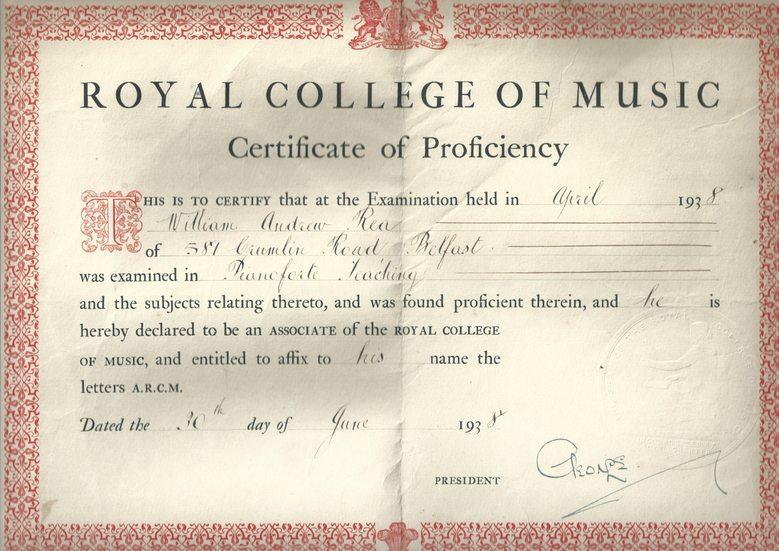
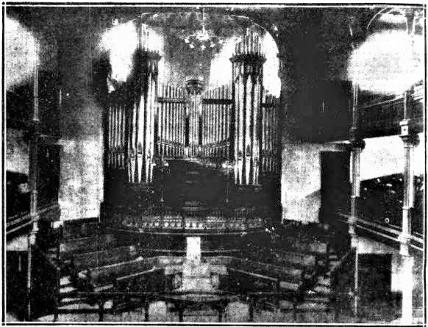
LH pic: A pic from the Belfast News-Letter, Saturday, 27 October 1923, page 8. It was entitled Belfast War Memorial Organ. The caption underneath read: ‘A beautiful three-manual organ, built by Messrs. Evans & Barr, Ltd., of the City Organ Works, Belfast, has been installed in St. Enoch’s Presbyterian Church, and was opened last night.’
The PDF below offers contemporaneous newspaper accounts of the opening of St Enoch’s new organ in 1923 — including its specification and details of Capt. Brennan’s playing.

|
St Enoch's organ.pdf Size : 239.684 Kb Type : pdf |
From the organ’s installation in 1923 up to May 1936, St Enoch’s had only one organist — George Lilley. When he took up his post the duties of the organist were laid out by the Kirk Session:
Leading the Praise -
1. The Sabbath Services
2. Afternoon Senior Sabbath School
3. Congregational Prayer Meeting [weekly]
2. Afternoon Senior Sabbath School
3. Congregational Prayer Meeting [weekly]
Conducting -
1. Weekly Choir Practice
2. Harvest Thanksgiving and Festival
3. Christmas Service
4. Easter Service
5. At least one Recital
6. At least one Concert
7. Young People’s Day and Junior Choir
2. Harvest Thanksgiving and Festival
3. Christmas Service
4. Easter Service
5. At least one Recital
6. At least one Concert
7. Young People’s Day and Junior Choir
And there would be more. In 1934, the Session had ruled that the organist should also be responsible for placing the numbers of the psalms and hymns on the hymnboards.
So the role must have kept William Rea busy.
On Sunday afternoon, 13 March 1938, the St Enoch’s Choir with their new organist took part in a service in the Assembly Hall, Fisherwick Place, Belfast, where the preacher was holding forth on ‘Betting and Gambling’.
At the end of March, Rea was performing in a concert in the Albert Hall of the Shankill Road Mission in aid of its church funds — ‘Mr William Rea delighted the audience with his original piano solos. The [Mission] Church Choir also contributed to the programme under the leadership of Mr. Arthur Martin [Rea’s successor].’ (Belfast News-Letter, Friday 25 March 1938, page 12). Press reports mention that the speeches included one by Mrs Jack Thompson — the mother-in-law to be!
And there was this (raising funds for the National Trust to save White Park Bay for the public):
Belfast News-Letter, Saturday 02 April 1938, page 12
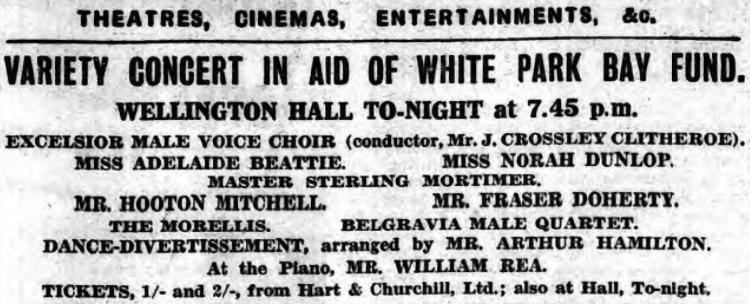
Hooton Mitchell ‘was unfortunately unable to be present owing to throat trouble, and James Johnston (tenor) appeared in his place’. The Morellis were a ‘novel item’ being expert accordionists. Master Mortimer was a boy soprano and the Belgravia Male Quartet ‘sang in their characteristic style’.
And there was also this: on Monday 11 April 1938, accompanying from the organ, Rea conducted Stainer’s The Crucifixion and other Passiontide music, ‘rendered by the church choir’ and with sopranos Olive Stronge and Muriel Linton, tenor George McCartney and bass Samuel Edwards.
Northern Whig, Tuesday 12 April 1938, p.8
It was the first time that the choir had attempted this work, and there was an appreciative attendance.
After weeks of assiduous practice the choir gave a very creditable performance and interpreted with the proper feeling the story of Gethsemane and the Cross. ... In addition to Stainer’s work, the anthems ‘O Saviour of the World’ (Goss) and ‘Jesu, Lamb of God’ (Mozart) were given by the choir. Mr. Edwards sang ‘There is a Green Hill’ (Gounod).
After weeks of assiduous practice the choir gave a very creditable performance and interpreted with the proper feeling the story of Gethsemane and the Cross. ... In addition to Stainer’s work, the anthems ‘O Saviour of the World’ (Goss) and ‘Jesu, Lamb of God’ (Mozart) were given by the choir. Mr. Edwards sang ‘There is a Green Hill’ (Gounod).
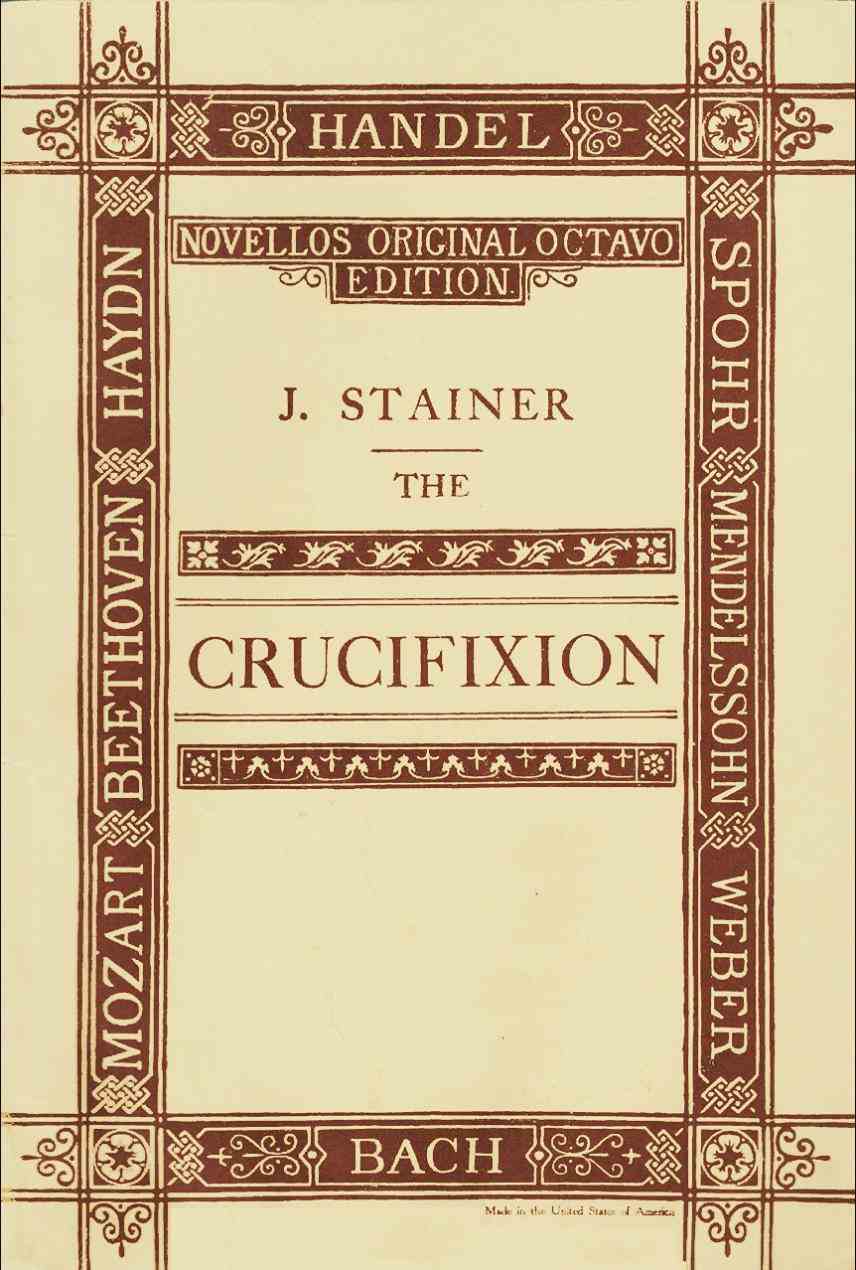
On Monday evening, 25 April 1938, William Rea was accompanying the after-dinner musical programme for the 20th annual meeting of the Excelsior Male Voice Choir in the Imperial Hotel. Its conductor, John Crossley Clitheroe, would certainly have been a good choral mentor for Rea.

|
Clitheroe, John Crossley.pdf Size : 320.968 Kb Type : pdf |
Clitheroe conducted several other choirs, including the Derry/Londonderry and Newry Philharmonic Societies, the Carrickfergus Choral Society and also the Belfast String Orchestra. He was organist and choirmaster of St Peter’s Church, Antrim Road, and principal of the North Belfast School of Music.
Read more about J.C.C. in the PDF on the left.
Occasional BBC regional broadcasts continued for William Rea. A Ballad Concert was broadcast on Tuesday evening, 2 August 1938 and there was hymn-singing from St Enoch’s on Saturday evening, 8 October 1938.
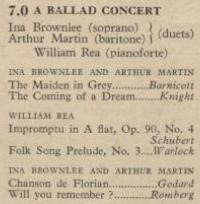
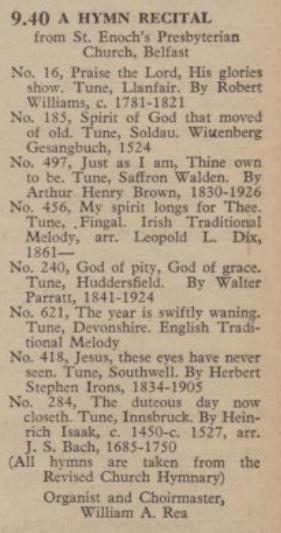
A ‘harvest home’ social evening in the hall of McCracken Memorial Presbyterian Church, organised by Ivor Burns, ARCM, organist, included contributions from Miss Claire Mathews, cello, and Mr W. A. Rea, piano.
(Northern Whig, Thursday 13 October 1938, page 8)
Indeed, life continued along similar lines until, and even after, the outbreak of war in September 1939.
The choir and organist took part in the Assembly Hall service for Temperance Day on Sunday 15 January 1939, contributing Garrett’s The Lord is loving and Sullivan’s Saviour thy children keep (set to the music of the part-song The long day closes).
There were annual congregational meetings in which the choir either ‘tastefully rendered’ (1939) or ‘effectively sang anthems under the conductorship of Mr W.A. Rea, ARCM, who also presided at the organ’ (1940).
(Belfast News-Letter, Saturday 18 February 1939, page 12, and Belfast Telegraph, Monday 26 February 1940, page 2)
RH pic: Fund-raising for the 36th Old Boys Club (attached to the Shankill Road Mission).
Belfast Telegraph, Thursday 23 March 1939, page 2.
And there was Handel’s Messiah.
Belfast News-Letter, Tuesday 12 December 1939, page 4
Belfast News-Letter, Tuesday 12 December 1939, page 4
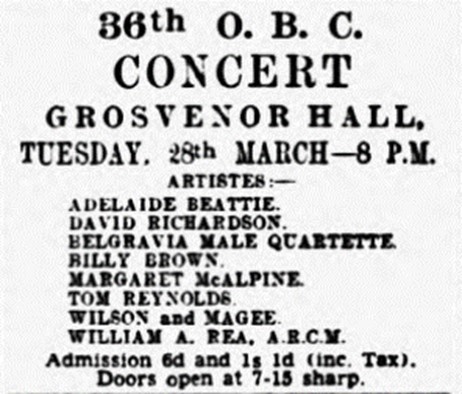
Fine Performance by St. Enoch’s Church Choir
Handel’s immortal oratorio, ‘The Messiah’, was presented last night by the choir of St. Enoch’s Presbyterian Church, Belfast, in a manner never previously excelled by it. Experience of the singing of the work was plainly evident throughout, and the congregation was treated to a feast of music well sung.
The organist and conductor, Mr. William A. Rea, A.R.C.M., had brought the choir to a high standard of perfection, and the various choruses were sung with a fine balance. …
… Mr. William Boyd, the tenor soloist, gave a grand send-off to the performance by his singing of ‘Comfort Ye My People’. Miss Muriel Childe (contralto) was also at her best, her expression being faultless. … The soprano was Miss Evelyn Gibb, who interpreted ‘Rejoice Greatly O Daughter of Zion’ and her other items with feeling and charm. Mr. Henry Crowther (bass) … sang splendidly. ...
Now with his ARCM diploma, William Rea was also teaching private piano pupils. The full-pages of examination results for Trinity College of Music, London, published in the press each September, show that in 1939 he had five successes, with a further four in 1940. Interestingly, in the 1940 listing, J. Crossley Clitheroe was awarded his FTCL for theory and composition — self-taught (recorded as ‘private study’).
Freelance appearances took on a war-time appearance. This from the Northern Whig, Saturday 27 January 1940, page 6:
For the Troops
MARRIAGE, WAR, COMPOSING
Rea was still conducting the Junior Choir of St. Enoch’s for Children’s Day on Sunday 26 May 1940, but other things were surely on his mind. This from the Belfast News-Letter, Wednesday 31 July 1940, page 1:
MARRIAGES
Rea–Thompson — July 16, 1940, at St. Enoch’s Presbyterian Church, by the Rev. W. P. Hall, M.A., assisted by the Rev. Gordon Young, B.A. — William A. Rea, A.R.C.M., eldest son of Mr. and Mrs. James Rea, 581, Crumlin Road, Belfast, to Doris, only daughter of Mr. and Mrs. Jack Thompson, 63, Dunlambert Drive, Belfast.
Doris had been a choir member of the Shankill Road Mission when she met William who was then the Mission’s organist (before the St Enoch’s appointment).
Prof. John M. Barkley, in St. Enoch’s Congregation 1872-1972
(page 153), writes: ‘On 14th August, 1940, the Session had to meet “for
the purpose of considering the appointment of an Organist and
Choirmaster for the duration of the war in room of Mr. Rea who had been
called up”.’
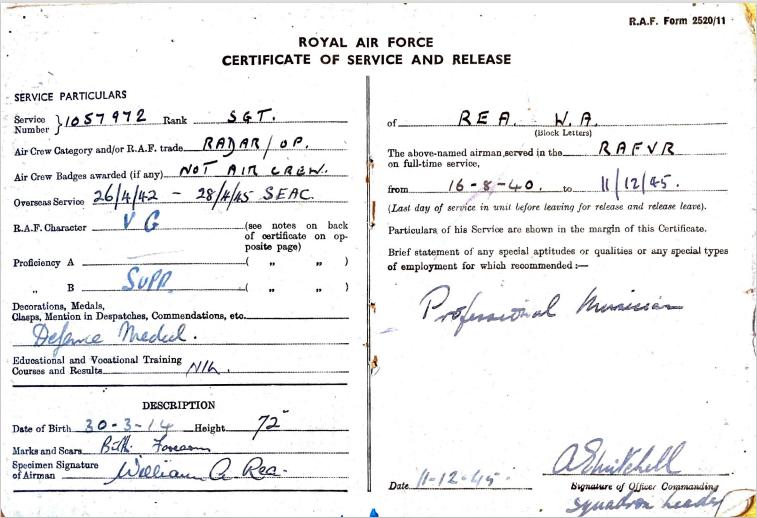
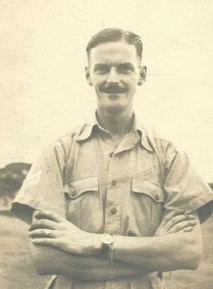
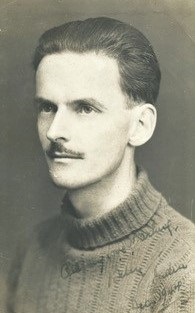
Pic far left: William Rea, RAF, in Ceylon, 8 October 1942.
Pic immediate left: William Rea - inscription reads 'All my love, Darling, Billy, India, December 1944'.
The first section from Islay Attenborough’s A Composer in Malaya (in the Straits Times, 17 February 1952), quoted previously, had told Rea’s story up to 1934 — probably most of it in his own words.
The following brief continuation summarises the story from 1935 to the war and then beyond:
Next year [1935] he became church organist and choirmaster for his local church and then, at 23 [1938], took over the position at one of the largest churches in Northern Ireland, St. Enoch’s.
Then followed more broadcasts, recitals and concerts. He continued studying under private tutors and himself began to teach pupils.
Then followed more broadcasts, recitals and concerts. He continued studying under private tutors and himself began to teach pupils.
In July 1940 Mr. Rea joined the RAF as a Radar operator.
For the next two years, whenever there was a piano to be found, Bill
practised and when, whilst stationed in Colombo, he was asked to do a series of Beethoven piano recitals over Radio Ceylon, he jumped at the offer.
After the war, he became music master of the Grosvenor
High School, Belfast, and during the time he was there produced several
Gilbert and Sullivan operas, training the singers and conducting the
orchestra. The Belfast Philharmonic Society claimed a lot of his spare
time as he became their organist and accompanist.
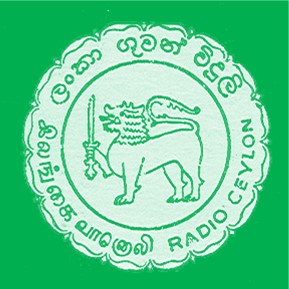
Source: The Sunday Times, the Sunday edition of The Straits Times and Singapore Free Press, No.863, Sunday, 17 February 1952, page 10.
Interestingly, William Rea’s RAF release certificate, shown above, records a final date of 11 December 1945.
Prof. John M Barclay, in his St Enoch’s book, page 171, records that ‘The organist, Mr. Rea, did not return from active service until the Autumn of 1945 ...’
And so it was back to the regular St Enoch’s commitments — though with added responsibilities, for June 1946 brought the birth of a son, William Anton Rea.
As before, harvest celebrations took place each October. In 1946 they included choruses from Haydn’s Creation, but the complete oratorio performances with the choir of at least 50 voices resumed annually from 1947, following the tradition established by the former organist, George Lilley, nearly two decades earlier (including Messiah each December).
The Belfast Telegraph, Tuesday 9 December 1947, page 4, reported that ‘A notable performance of Handel’s Messiah was given by St Enoch’s Presbyterian Church choir on Monday evening under their choirmaster and organist, Mr. William Rea, ARCM. With over 60 voices, the choir gave to their work a rich tonal blend and choral sensitiveness, which Mr. Rea directed with impressive effect ...’
On Monday 19 April 1948, Rea and the St. Enoch’s choir entertained the residents and staff of Clifton House, North Queen Street, with a ‘musical programme’.
Aside from St Enoch’s, there was the day job — music teacher at Grosvenor High School (four days per week) and Regent House School, Newtownards (one day). At that time, Grosvenor High School was situated in Roden Street, off the Grosvenor Road. It changed its name to Grosvenor Grammar School in 1993.
Page 5 of the Belfast Telegraph, Friday 15 December 1950 reported of one of those G&S ventures:
‘Grosvenor High School on Thursday evening gave the first
of their five performances of Gilbert and Sullivan’s H.M.S. Pinafore.
It is believed that this is the first occasion on which a Belfast
grammar school has presented a Gilbert and Sullivan opera in its
original form. … Production is by Mr. S.N. Ross, the Senior Classical Master, and the musical side is in the hands of Mr D. Maybury. All the work has been done this term and has aroused
great interest and enthusiasm in the school. The conductor of the
orchestra is Mr. William Rea, the school music master.’
The orchestral line-up in the printed programme has some interesting names in it, not least, playing clarinet, Dr J. Stuart Hawnt, Belfast Director of Education and Chairman of the Belfast Savings Council.
Vincent in the violins would likely be George Vincent who often appeared as a Belfast concert soloist in earlier years. According to his press advertisements for violin teaching, he ‘resided and studied with Monsieur L. Duloup, the famous violinist, for four years in Frankfort and Paris’. I believe he was the father of James (Jim) Vincent, for so many years a superb tuner of keyboard instruments.
Note also the young Sam McCready in the chorus of sailors and marines.
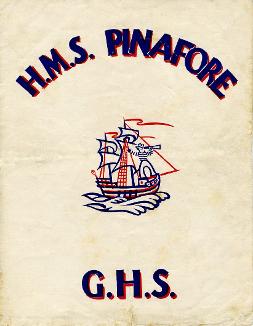
The complete programme for H.M.S. Pinafore is available in the PDF on the right.
My thanks to Victor Berry (aka The Rt. Hon. Sir Joseph Porter, K.C.B.) for the loan of his copy.

|
HMS Pinafore programme 1950.pdf Size : 1858.097 Kb Type : pdf |
The production was a great success and three more performances were given in January 1951, ‘in response to numerous requests’.
The school’s next G&S production was The Gondoliers
in December 1951 for six nights, but William Rea had left some time
before that. The orchestra and chorus were now directed by Mr D. Maybury
and conducted by Mr P.G. Ward.
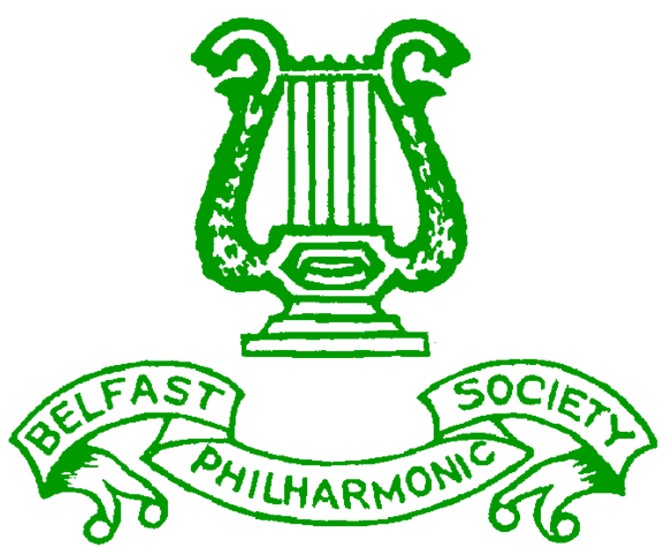
There’s no mention of the Belfast Philharmonic Society (the ‘Phil’) in the Belfast Telegraph article from 8 November 1948, though it is referred to in the Straits Times article from February 1952: ‘The Belfast Philharmonic Society claimed a lot of his spare time as he [William Rea] became their organist and accompanist’.
From 1935, Frederick Stone, the BBC’s accompanist, had played for the Phil, following the retirement of the long-serving J.H. MacBratney due to ill health. Stone is remembered nowadays through his recordings with Kathleen Ferrier; he was also an occasional piano-duo partner with Irish composer Rhoda Coghill (Coghill was Radio Éireann’s resident accompanist from 1939 until her retirement in 1968). Stone is sadly overlooked in today’s music reference books.
The Phil then advertised for an accompanist on 9 Sept
1938, presumably because Frederick Stone was no longer readily
available. Did William Rea apply at that time?
The position went to Dorothy Kelly from Tobermore. She had studied for three years at the Guildhall School of Music in London and the PDF on the right gives more information about this Northern Irish pianist.

|
Kelly, Dorothy.pdf Size : 261.158 Kb Type : pdf |
In 1946, Dorothy Kelly moved to London. The Phil advertised the accompanist vacancy in early August that year.
Presumably that was when William Rea may have taken on the role. He seems not to have stayed for any length of time. Havelock Nelson, appointed BBC accompanist in 1947, was also the accompanist for the Phil’s concert on Friday 28 January 1949.
Importantly, this was the period when William Rea, the composer, began to emerge.
Of course, there had already been that Shankill Road Mission concert in March 1938 in which the Belfast Telegraph reported that ‘Mr William Rea delighted the audience with his original piano solos’.
The British Music Society concert in October 1950 (see the opening reports at the start of this web-page) is still a little in the future, but by 1948 Rea was clearly busy writing — even at the beach:
Belfast Telegraph, Monday 8 November 1948, page 4 — part of a column entitled Seen and Heard:
A Composer of Promise
Mr WILLIAM REA, ARCM., music master at Grosvenor High School, Belfast, who has several interesting musical compositions to his credit, has just finished his biggest thing yet — an introduction, fugue and rondo for two pianos based on the modern twelve-tone scale. Much of it was done during the summer on the sands at Portstewart. Now it is ready for a London publisher and those who have heard it have been very favourably impressed.
Mr. Rea does a good deal of choral work at Grosvenor High School and has built up a school choir which it is a delight to hear. ‘The Jolly Shepherd’, which the girls’ choir sang at the recent prize distribution at the Assembly Hall was written specially for the occasion to words of John Wootton, a Sixteenth Century poet. It is a simple, catchy little thing, especially suited to young voices, and the girls made the most of it.
They also sang the lovely Bach chorale, ‘Sheep May Safely Graze’ — a refreshing change from the stereotyped school songs often chosen for prize days. One of those who enjoyed it and congratulated the conductor was the Minister of Education.
Music Teaching
The greater part of Mr. Rea’s life is given up to music periods, with class following class in a carefully worked-out schedule. Four days of every week are spent at Grosvenor High School, and on the fifth he goes to Regent House, Newtownards, where he is also music master. Saturday is a free day, although he generally spends it at his piano at home, and on Sunday he plays the organ at St Enoch’s Presbyterian Church.
Mr Rea finds it all fascinating, especially the work among young people. Boys and girls, for example, make an interesting contrast in their approach to the singing lesson. At first, the boy is rather blasé, feeling ‘this sort of thing is rather Sissy’, but once he becomes interested he loses his self-consciousness and the rest is plain-sailing, more or less.
Mr. Rea did a good deal of concert work during the war while serving with the R.A.F. in Ceylon. He also gave a number of piano recitals.
That Introduction, Fugue and Rondo for two pianos may have been a typo or journalist’s misremembering of the Introduction, Fugue and Pastoral referred to in the Straits Times article from 1952 (see below). Or perhaps Rea subsequently rewrote the last movement, replacing the Rondo with a Pastoral. Does a copy survive somewhere?
And what about William Rea’s setting of The Jolly Shepherd? Any possibility that a past-pupil has retained a copy?
There have been other settings of The Jolly Shepherd, including one for SA and piano by Martin Shaw in 1904. Laurence Picken set it as the first in a song cycle (1925); John Rutter for SATB with piano or organ or orchestra in 2019; not to mention the 2016 SATB Christmas carol by David Byers!
William Rea clearly enjoyed his work with choirs and his own experiences at competitive festivals certainly didn’t seem to have put him off.
The Belfast Telegraph for Monday 21 March 1949, page 6, gave the results of the choral competitions in that year’s Belfast Musical Festival.
In the Open class for boys, girls or mixed voice choirs, aged under 18, Grosvenor High School (conductor Mr. W. Rea) came second with 84 marks.
However, they had beaten the Strandtown Girls’ Choir (conductor William McKnight) and Princess Gardens School (conductor Miss Irene G. Browne) who tied on 83 marks.
It must have been just a little galling that first prize went to the Shankill Mission Club (conductor Miss K. Simpson) with 86 marks!
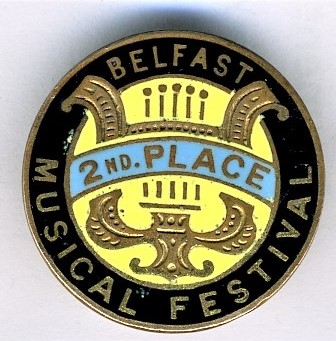
Rea’s three Improvisations played by Rea in that BMS recital on Tuesday 24 October 1950 have not resurfaced as yet, but the Fairy Tale, dated December 1949, has indeed survived happily ever after!
The complete autograph score is in the PDF below, right. And below it is a digitised copy, courtesy of pianist Roy Holmes.


|
Fairy Tale - William Rea - full score.pdf Size : 1662.118 Kb Type : pdf |

|
Fairy Tale digitised by Roy Holmes 2021.pdf Size : 354.006 Kb Type : pdf |
Here’s another update — a continuation — from Islay Attenborough’s Straits Times article, A Composer in Malaya (17 February 1952):
During this time [1946-1950] Mr. Rea had been busy composing settings to such famous poets as Shelley, Burns and Byron. Other works were an Introduction, Fugue and Pastoral for two pianos, three improvisations for piano, and a fairy tale for piano. These were so good that they were broadcast straight away by the B.B.C. He became very interested in the Twelve-Tone Technique, a system of composition originated by Schoenberg and used by such well-known composers as Anton Von Webern, Ernst Krenek and Alban Berg.
So when he read that there was to be a Festival of Britain Competition for the best sonata submitted, it was only natural that he should set to work to compose a sonata using the Twelve-Tone Technique.
I’ve found no trace of those BBC broadcasts so far. But Rea’s piano sonata would become another mystery.
In March 1950 Rea’s Grosvenor High School Choir once again came second in the class for Boys, Girls or Mixed Choir, under 18, at the Belfast Musical Festival. But the month offered a ray of hope with the announcement of the Festival of Britain Composers' Competition. More in a moment!
Friday 17 October was a Masonic Concert in Banbridge with Rea accompanying the Belfast Girl Singers (conducted by Kay Simpson), Billy Neely (boy soprano), George Beggs (baritone) and others.
Tuesday 24 October 1950 found William Rea playing his own piano music at the BMS (see reviews in the opening items of this webpage).
Monday 11 December 1950 was Messiah at St Enoch’s. The following day the Belfast News-Letter thought the ‘interpretation reflected great credit on the organist and choirmaster, Mr. William Rea, and was obviously the result of careful and sympathetic work. With a choir of 53 voices the performance was more neat than majestic, and was distinguished by good intonation, even phrasing and a splendid clarity of diction. The soloists were Gladys Thompson (soprano), Muriel Childe (contralto), Frank McDonald (tenor) and Leslie Graham (bass).’
FESTIVAL OF BRITAIN - COMPOSERS’ COMPETITION
When the Northern Ireland Festival of Britain Committee was established under the chairmanship of Sir Roland Nugent,
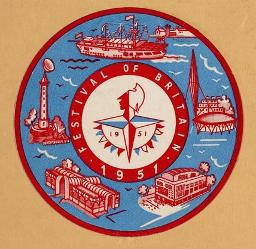
it was decided that C.E.M.A. (the Council for the Encouragement of Music and the Arts N.I., the forerunner of the Arts Council of Northern Ireland) should be responsible for the section devoted to the arts of painting, music and drama in Ulster.
So, in March 1950, C.E.M.A. (NI) duly announced a competition for composers (corresponding to one for playwrights and another for architects) to mark the Festival of Britain, 1951.
Aspirations were certainly high on Thursday 3 May 1951, when Dame Dehra Parker, the Minister of Health and president of C.E.M.A., opened exhibitions in the Belfast Museum and Art Gallery of works by Sir John Lavery, and of Northern Ireland books and manuscripts. The Festival was centred on Belfast, she declared, but it embraced the whole of Northern Ireland.
Dame Dehra continued, ‘An occasion such as this presents us for the first time with an opportunity to prove what our regional contribution to the arts can be, and to demonstrate, regionally, the artistic qualities of the Ulster spirit — as distinct from the Industrial.
‘We Ulster people are citizens of no mean country and our industrial and agricultural reputation stands high in the Empire — indeed, the products of our labours are household words in most countries of the world. This very fact has tended to overshadow the less material qualities of the Ulsterman and his ability in the creative and artistic sphere.
‘Our artists, writers, actors and musicians have seldom received sufficient encouragement at home and have, therefore, sought and received individual recognition outside their native Province. As a consequence their Ulster origin has tended to be obscured.’
Dame Dehra believed that when the Festival ended, much of tangible and permanent value would remain …
‘Is it too much to hope that in our midst there will also be a new appreciation of our artistic possessions, and that we shall see the birth of a new realisation of our inner strength and creative powers and a greater pride in the artistic achievements of our people?’
Too much to hope? Answers on a postcard!
RH pic: Composers’ Competition advertisement, Belfast Telegraph, Monday 20 March 1950, page 3
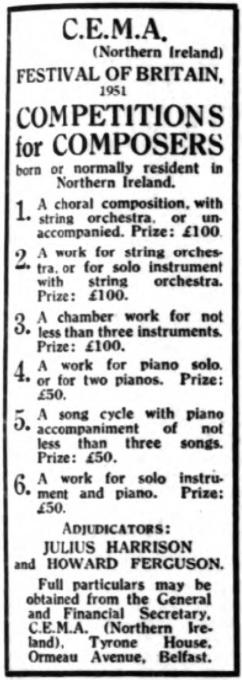
Breakfast-time readers of page 6 of the Belfast News-Letter on Friday 4 May 1951, could digest the Competition results, announced the previous day by Dame Dehra Parker. The newspaper helpfully supplied each composer’s potted biography.
The following listing refers to the advertisement’s numbering system. Note that there was no winner for No.3, the chamber work. It would be fascinating to know if anyone had entered that class.
No.1 Mr. A. J. Potter [1918-1980], of 94, Oxford Road, Moseley, Birmingham, for his Missa Brevis.
Mr. [Archie] Potter, who was born in Belfast in 1918 [son of a blind Belfast piano-tuner], is engaged in business in West Africa, Belfast, and Birmingham. Taught singing by Mr. William Boyd, he won bass solo classes at Belfast, Derry and Carrick [Music Festivals] in 1950. He is a member of the Ormiston Choir selected to represent Northern Ireland at the Festival of Britain.
No.2 Dr. Ivor Keys [1919-1995], of 19, Chlorine Gardens, Belfast, for his Concerto for Clarinet and Strings.
Dr. Keys is Reader in Music at Queen’s University, Belfast. [He was shortly to become the first Hamilton Harty Professor of Music at Q.U.B.]
No.4 Prize-money divided equally between two winners, Mr. William Rea [1914-1993], of 18, Cliftonville Avenue,
Belfast, for his Piano Sonata (1950); and Mr. Thomas C. Kelly [1917-1985], of 29, Queen Street, Newry, for his
Sea Sonata for piano.
Mr. Rea is organist and choirmaster in St. Enoch’s, Belfast, and part-time music master, Regent House School, Newtownards.
Mr. Kelly, a native of Wexford, was appointed organist at St. Catherine’s Church, Newry, in July, 1940, and has resided in Northern Ireland since then.
No.5 Prize-money divided equally between Miss Dorothy Parke [1904-1990], of The Cottage, Osborne Drive, Belfast,
for A Honey Comb; and Dr. Havelock Nelson [1917-1996], 78, Knockbreda Road, Belfast, for Love’s Joy and
Pain.
Miss Dorothy Parke, who was born in Londonderry, has set the poems of Richard Rowley and John Irvine to music.
Dr. Nelson is on the staff of the B.B.C., Belfast.
Howard Ferguson (1908-1999) was an obvious and great choice for adjudicator, given his undoubted compositional skills and Belfast birth. Julius Harrison (1885-1963) was maybe more surprising — perhaps a safe choice. He was vice-president of the Elgar Society, a distinguished orchestral conductor and a good, though conservative, composer.
On the Festival Inauguration Day there was a Lunchtime Concert in the Whitla Hall of QUB — the Opening Festival Concert.
The Belfast Newsletter, Friday 4 May 1951, page 6 reported:
‘Mr. Howard Ferguson’s fine Piano Sonata in F minor, performed by himself, was both an appropriate and important centrepiece for this lunch-time concert, which began with three Organ Preludes by Charles Wood (another Ulster-born composer) played by Mr. Evan John, and concluded with the [Mozart] Sonata in B flat K358 for piano duet in which the performers, Dr. Ivor Keys and Mr Howard Ferguson, appeared to derive as much enjoyment as the audience.’
William Rea commented on the Festival of Britain competition in this next continuation section from that Straits Times article from February 1952 (op.cit.):
He didn’t take long in writing his prize-winning work, for he read about the competition in September 1950 and it was completed in November. He then submitted it to the Festival Authorities.
‘But then,’ says modest Mr. Rea, ‘I proceeded to do my best to forget about it. I knew there would be a lot of entries and I didn’t think my composition had the smallest possible chance.’
However he proved to be very wrong, for when he attended the Northern Ireland Festival of Britain Inauguration Ceremony, he was presented with the first prize of £50. The first public performance of the Sonata — correct title ‘Sonata for Piano (1950)’ — was on February 2.
It will be broadcast by the B.B.C next Friday, February 22. The soloist will be Doctor Ivor Keys, Professor of Music, Queen’s University, Belfast.
I asked Mr. Rea when Malayan listeners will be able to hear his Sonata.
‘We have cabled the B.B.C.’, he said, ‘to send us a copy of the recording. So it will depend on how soon they send it, and on how quickly we receive it.’
‘We have cabled the B.B.C.’, he said, ‘to send us a copy of the recording. So it will depend on how soon they send it, and on how quickly we receive it.’
Mr. Rea has just finished a String Quartet (1951) and is in the throes of a composition for a String Orchestra.
No mention of sharing the prize or the prize-money with T.C. Kelly!
I’ve not found a reference to a performance on ‘February 2’, though perhaps that was a misprint for 22, but Prof. Keys did indeed give a broadcast of the work on 22 February for the BBC NI Home Service, though by that time William Rea, wife and son, were definitely abroad!
Radio Times, Friday 22 February 1952, NI Region
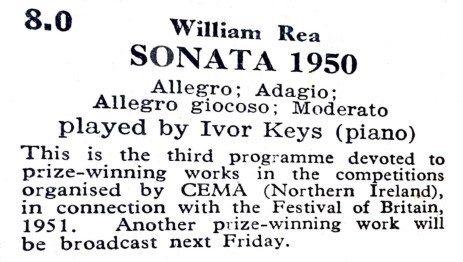
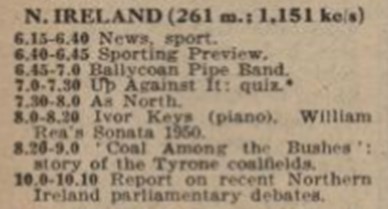
The following prize-winning works, like William Rea’s Sonata 1950, were broadcast on the BBC Northern Ireland Home Service:
Dorothy Parke’s A Honeycomb (settings of poems by James Stephens) on Tuesday 5 February 1952,
7.45-8.00pm, no performers were listed;
Thomas Kelly’s Sea Sonata, was played by Havelock Nelson on Friday 15 February 1952, 6.50-7.10pm;Havelock Nelson’s song cycle Love’s Joy and Pain, with Henrietta Byrne, soprano, and the composer
at the piano, was broadcast on Friday, 29 February 1952, 6.45-7.00pm;
Ivor Keys’s Clarinet Concerto had to wait much longer - until Tuesday 27 October 1953, 8.30-9.00pm, when he
conducted the BBC NI Light Orchestra with James Johnston (clarinet).
For the sake of completeness, I’ve not found any mention of a resultant broadcast for Archie Potter’s Missa Brevis.
MUSIC SCORES FOR PERFORMANCES ABROAD
There’s an important event in Rea’s life which came between the announcements of that Festival of Britain competition and its results, some 13 months later. Important reputationally perhaps, though the practical outcome remains unknown.
The press throughout Ireland carried the following advertisement, including the Derry Journal and the Belfast Telegraph. Notice the very short lead-in time: just five weeks to send for the entry form, to prepare the selected score(s) and to return the score(s) and completed entry form.
Belfast Telegraph, Wednesday 25 October 1950, page 2
ADVISORY COMMITTEE ON CULTURAL RELATIONS.
COPYING OF WORKS OF CONTEMPORARY IRISH COMPOSERS.
On the recommendation of the Cultural Relations Committee, the Minister for External Affairs has agreed to make a grant for the selection and copying of unpublished musical works by contemporary Irish composers with a view to encouraging their performance abroad. Examinations of works for selection and copying will be made periodically. Entries for the first examination are now invited.
To provide for the selection of works two examining panels have been established, viz. (1) a panel of well-known Irish musicians whose function will be to exclude works falling below a certain standard of technical competence and (2) a panel of three eminent foreign musicians to each of whom works passed by the preliminary panel will be submitted. All selected works will be copied.
Decisions of each panel will be taken by majority vote.
The conditions for the first examination of works are as follows —
1 -
2 -
3 -
4 -
Irish citizens or persons of Irish birth or parentage, or persons
who have been ordinarily resident in any part of Ireland since 1st
January 1940, are eligible to submit works.
Only original unpublished works (excluding arrangements) of a musically serious nature should be submitted.
No composer may submit more than two works, and
Entries (one copy of each work) must reach the Cultural Relations Committee not later than 30th November, 1950, accompanied by an Entry Form obtainable on application from the Secretary, Cultural Relations Committee, Iveagh House, Dublin.
Only original unpublished works (excluding arrangements) of a musically serious nature should be submitted.
No composer may submit more than two works, and
Entries (one copy of each work) must reach the Cultural Relations Committee not later than 30th November, 1950, accompanied by an Entry Form obtainable on application from the Secretary, Cultural Relations Committee, Iveagh House, Dublin.
Department of External Affairs,
Dublin.
21st October, 1950.
Dublin.
21st October, 1950.
The Irish Independent, Monday 23 October 1950, also carried the advertisement, but additionally, on page 8, it used the same text, with a re-ordering of its opening sentence, as a news story, headlined ‘Grant will aid Irish Music’.
Importantly, there are these two additional paragraphs after ‘Iveagh House, Dublin.’:
The three foreign musicians who have agreed to collaborate with the scheme are Arnold Bax [(1883-1953) English composer fascinated by Ireland], Jean Martinon [(1910-1976) French conductor and composer] and Daag Wiren [Dag Wirén [(1905-83) Swedish composer].
For the first examination the preliminary panel of Irish musicians will be: — Brian Boydell, Arthur Duff, Professor Aloys Fleischmann, Joseph Groocock, Elizabeth Maconchy, Fachtna Ó hAnnracháin, and William Watson.
The scheme had been suggested by the Music Association of Ireland (MAI) to the music sub-committee of the Cultural Relations Committee (CRC) in 1949. The scheme and its outcome has been documented in Teresa O’Donnell’s The Music Association of Ireland: A Cultural and Social History (Doctoral thesis, National University of Ireland, 2012), pp.78-81, available online here as a PDF.
27 works were submitted, certainly including at least one by William Rea (remember, composers were able to submit two). It took well over a year — until March 1952 — for the Irish panel to choose nine works for assessment by the international panel.
Finally, the panel ‘of foreign musicians’ recommended six works by four composers for immediate copying by the CRC — not to be confused with commercial publication, but rather having a few copies reproduced as one might have copies of an architect’s ‘blueprints’.
Two members of the Irish panel were well represented amongst the ‘winners’:
Brian Boydell
Aloys Fleischmann
Frederick May
William Rea
In Memoriam Mahatma Gandhi (orchestra)
Five Settings of Poems by James Joyce (baritone and piano)
Overture The Four Masters (orchestra)
The Fountain of Magic (song cycle for high voice and piano)
The Fountain of Magic (song cycle for high voice and piano)
Lyric Movement (string orchestra)
Introduction, Fugue and Pastoral (string orchestra)
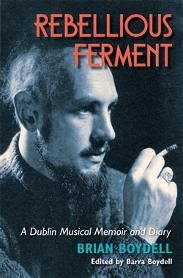
Brian Boydell’s orchestral work In Memoriam Mahatma Gandhi remains
one of his best known. Michael Dervan has noted two performances ‘in
Dublin by the then Radio Éireann Symphony Orchestra in 1948, with
further repeats in 1951 and 1953, followed by Geneva and Gothenburg in
1953, Paris in 1954, and Canada in 1955’ (Irish Times, 4 January 2020).
The Five Joyce Songs were premièred in 1946 by Boydell himself, accompanied by Joseph Groocock.
LH pic: Brian Boydell, c.1947. Cover pic of Boydell’s Memoir and Diary, Rebellious Ferment,
edited by Barra Boydell (Atrium, Cork University Press, 2018).
Aloys Fleischmann’s concert overture, The Four Masters, was written in 1943 and performed the following year in the Gaiety Theatre, Dublin.
The four songs of The Fountain of Magic also existed in a version for voice and orchestra, first performed in 1945.
RH pic: Aloys Fleischmann conducting the Cork Symphony Orchestra, 1958.
Photo by Lieut. Col. Rory Frewen.
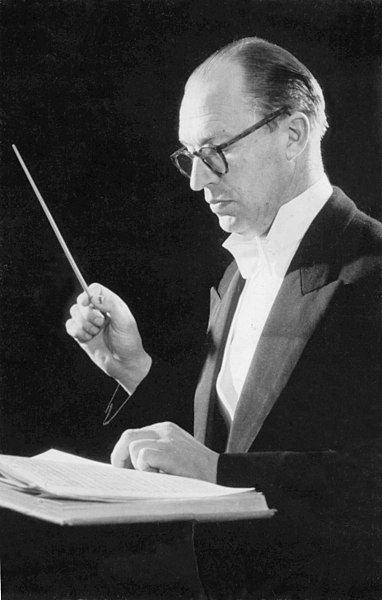

Frederick May’s Lyric Movement for strings, dating from 1939, had been premièred in 1943 at the Royal Dublin Society.
LH pic: Frederick May from ‘An Irishman’s Diary’, Irish Times, Friday 12 February 1943,
before the first performance of the Lyric Movement on 15 February.
William Rea’s work was the most recently composed, dating from the end of 1948 — assuming it to be the piece (or a version of it) referred to as Introduction, Fugue and Rondo [sic] for two pianos in the Belfast Telegraph ‘Seen and Heard’ article quoted above (8 November 1948) and mentioned as the Introduction, Fugue and Pastoral in the Straits Times article, A Composer in Malaya (17 February 1952), also quoted above.
Rea must have been busy orchestrating it for string orchestra in the first couple of weeks of November 1950, even as he was rehearsing Gilbert and Sullivan’s H.M.S. Pinafore for Grosvenor High School, and Handel’s Messiah for St Enoch’s.
The outcome of the MAI/CRC scheme was known some time after March 1952 and presumably before October 1953 when Bax died while visiting the Fleischmanns in Cork.
When were the composers notified? Were they ever sent copies? Worse, might Rea have sent his original (and only) manuscript version, and was it ever returned to him? Where is it now?
Teresa O’Donnell has pointed out (op.cit.) that, ‘The copying of selected works took considerably longer than expected ... not completed until 1955, almost four years after the idea was initially proposed.’
By which time William Rea had been in Malaya for more than three years.
All that has surfaced so far is an empty and re-purposed folder.
Neither named work has been found.
Might Rea have discarded the two-piano version once it had been orchestrated?
RH pic: The label on the empty folder.
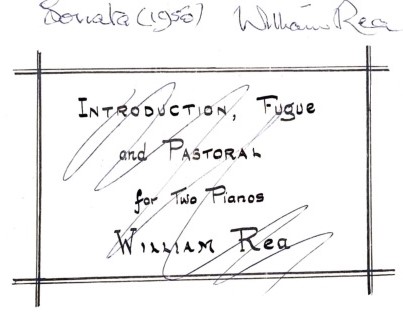
Surely the MAI/CRC archives must hint at the whereabouts of the scheme’s outcome — a copy of the recommended score? Unlike the initial announcement of the scheme, there seems to have been little or no publicity in the press about its outcome. As a colleague has suggested, the CRC may only have had a minimum number of copies to supply any likely requests from foreign countries.
Given the apparent lack of promotion,were there ever actually any such requests?
I’ve sought enlightenment about any surviving copy of Rea’s work from the Irish government agency for publications, An Gúm. Likely because of Covid-19 restrictions, I’ve only received an acknowledgement of my email. Watch this space!
Meanwhile, perhaps here was an opportunity for the MAI/CRC scheme to be exploited: the Boston Symphony Orchestra, with conductor Charles Munch, began its 1956 European tour, celebrating its 75th anniversary year, with concerts in the Savoy Cinema, Cork and then Dublin’s Theatre Royal.
The Dublin concert was attended by a great cast list of VIPs: the President Seán T. O’Kelly, the Taoiseach John A. Costello, the Minister for External Affairs Liam Cosgrave, the former Taoiseach Éamon de Valera, the Lord Mayor of Dublin Robert Briscoe, and the U.S. Ambassador to Ireland, William Howard Taft III.
Significantly, as reported on page 3 of the Catholic Standard, Friday 31 August 1956, ‘A presentation of the scores of five original works by Irish composers was made to Dr. Munch by Miss Kitty O’Callaghan on behalf of the Cultural Relations Committee [of the Department of External Affairs].’
Were any of these the ‘newly’ copied works?
Were any of these the ‘newly’ copied works?
RH: PDF of the Boston Symphony Orchestra’s schedule and programme content for Cork and Dublin.

|
BSO tour schedule 1956.pdf Size : 287.964 Kb Type : pdf |
Schedule and programme cover from the Boston Symphony
Orchestra Archives, a remarkable resource available here.
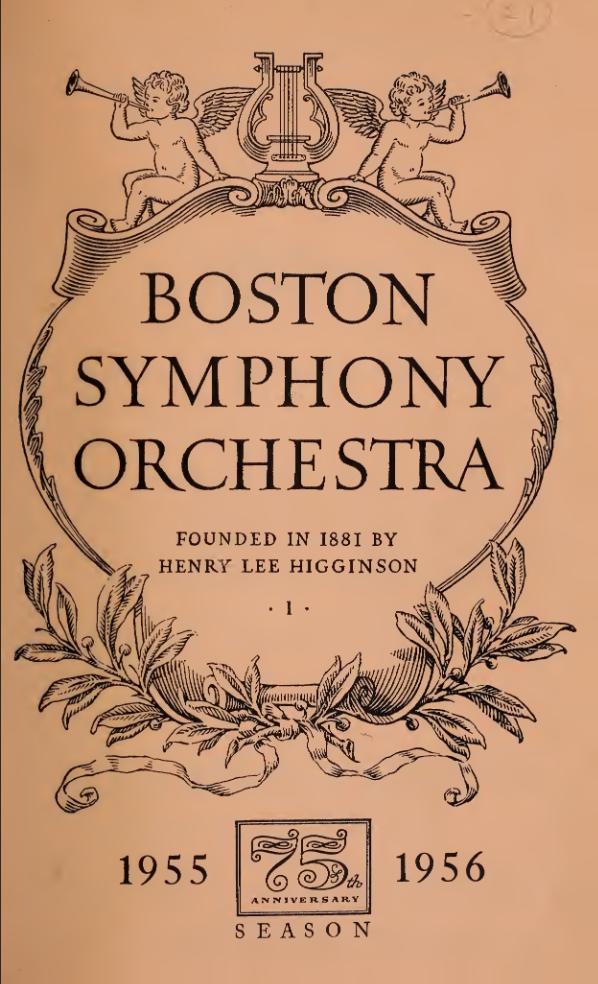
DEPARTURE FOR MALAYA
Apart from the Festival of Britain and the lack of news about the MAI/CRC scheme in Dublin, most of 1951 followed its usual course, beginning with an advertisement for pupils, not to mention James Ching again!
Belfast Telegraph, Monday 1 January 1951, page 1
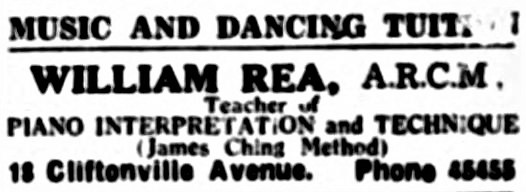
On Sunday 18 March 1951, William Rea was accompanying Passiontide music on the organ of the Grosvenor Hall. The soloists were grandly named in Monday’s Belfast News-Letter as Madame Adelaide Beattie, Madame May Goudy and Messrs. Stewart McKinley and Alex. Rogers, with Ivor C. Burns conducting.
However, with no BBC broadcasts since returning from war service in Ceylon, and with Havelock Nelson as a new young staff accompanist at the BBC, it’s probable that for William Rea the future prospects of professional
development would have appeared somewhat limited in Northern Ireland.
He must surely have been keeping an eye out for other opportunities. The offer of employment at Radio Malaya as Assistant to the Music Supervisor likely came about through war-time contacts in Ceylon.
St Enoch’s Presbyterian Church was clearly sad to lose its organist and a Social Evening was held on Monday,
26 November 1951 with presentations and a musical programme during which ‘Pianoforte solos were rendered by
Mr. Rea, who also, by special request, played a solo of his own composition’.
A press release was issued (see PDF on the right) and dutifully paraphrased with a variety of headlines on Wednesday, 28 November 1951.

|
Press release re 26 Nov 1951.pdf Size : 115.811 Kb Type : pdf |
Belfast News-Letter, page 3 —
Northern Whig, page 5 —
Belfast Telegraph, page 5 —
BELFAST MUSICIAN ENTERTAINED / Leaving for Singapore
Farewell party for Belfast organist going to Singapore
CHURCH SAYS FAREWELL TO ORGANIST
Before departure, there was a 15 minute piano recital for Radio Éireann, listed in the Belfast Telegraph, Thursday 6 December 1951, page 10.
Today’s radio programmes / Athlone (530 metres) / 7.15pm William Rea (piano)
It was duly covered by the Northern Whig, Saturday 8 December 1951, page 4 (below right).
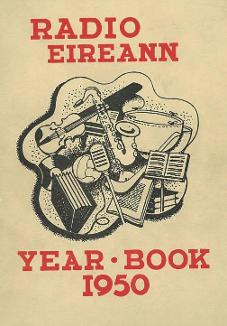
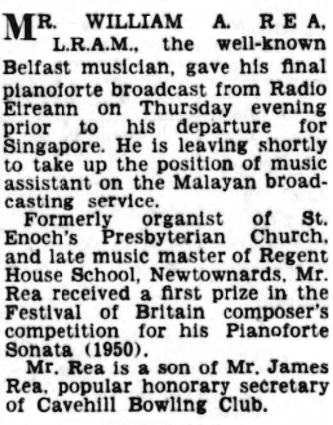
And so, on 14 December 1951, William Rea sailed out of Southampton on board the P&O Canton for Singapore.
His wife and son would follow on board the more modern P&O Chusan from London on 22 January 1952.
RH pic: The Canton in Singapore (courtesy of Commander
Nicholas R. Messinger’s P&O website here).
The RMS Canton was built by Alexander Stephen and Sons, Glasgow, for P&O and launched in April 1938, but requisitioned by the Admiralty for war service in October 1939. She survived the war and in 1947 was reconditioned by Stephen and Sons and returned to P&O for its Far East Service. See more here.
The SS Chusan was delivered to P&O in June 1950, having been built by Vickers-Armstrong Ltd., Barrow-in-Furness. It offered superior standards on the Far East routes. More here.
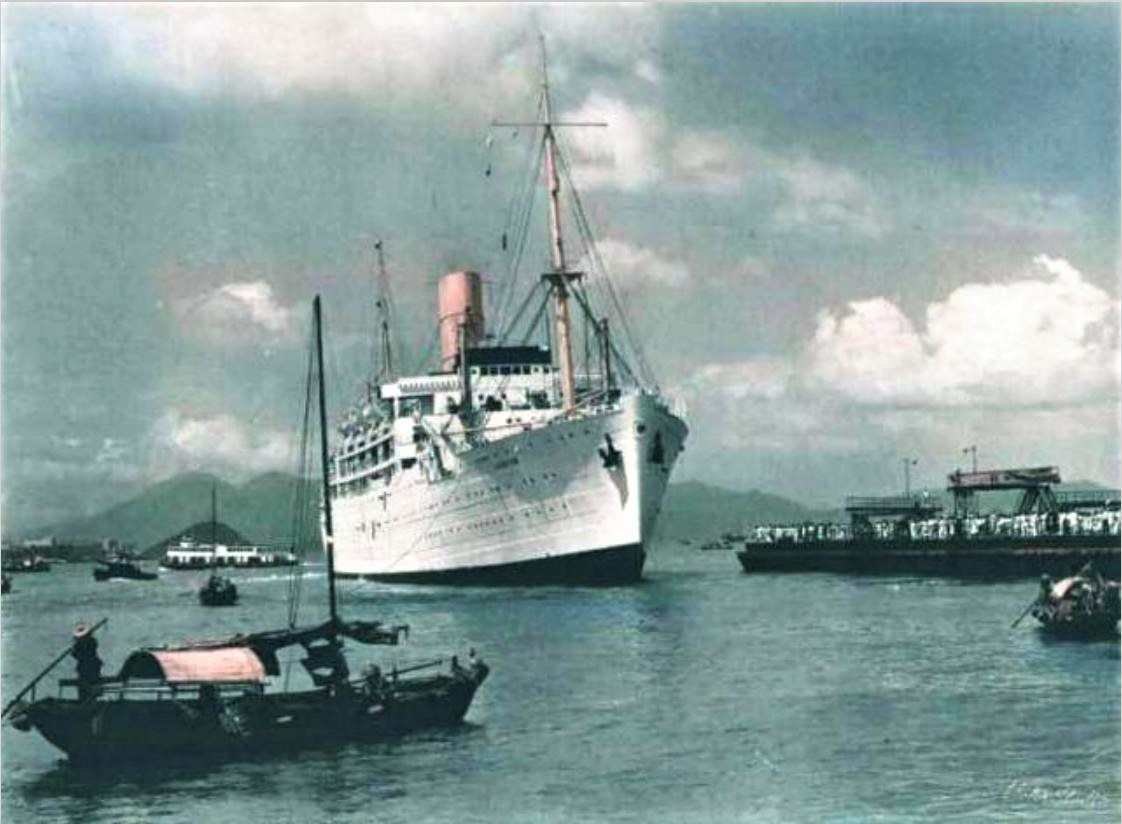
MALAYA
William Rea began his new employment in January 1952 and within a matter of weeks the Sunday edition of The Straits Times and Singapore Free Press published a profile of him by Islay Attenborough (see ‘thumbnail’ below left!).
Most of it has been quoted earlier on this webpage, but the complete article is available below.
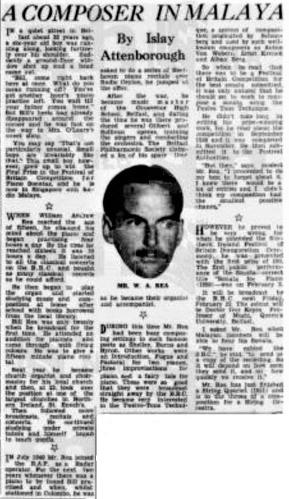
A full and legible transcript of the article is provided in this PDF:

|
A Composer in Malaya 1952.pdf Size : 213.594 Kb Type : pdf |
The one important addition to what has already been quoted is the final sentence:
Missing works to be noted and tracked down!
Meanwhile there were concerts to be given ...
The Singapore Free Press, 9 April 1952, page 4
Forthcoming events
Radio Malaya’s distinguished acquisition William Rea is to give a piano recital at the Auditorium, Broadcasting House on Tuesday (9.15 pm). His programme will be: Chromatic Fantasia and Fugue (Busoni-Bach) and Sonatine (Ravel), and the Sonata with which he won the Festival of Britain prize. He will also play three improvisations. Tickets can be obtained from Record Library, Radio Malaya.
The Singapore Standard 16 April 1952 reported that ‘LAST NIGHT, a number of people attended a pianoforte recital in the auditorium of Radio Malaya given by Mr. William Rea in which he played J. S Bach’s Chromatic Fantasia and Fugue, a Ravel Sonatine and two works of his own composition, the Sonata (1950) …’
Unfortunately the remainder of the newspaper report ‘may only be viewed from the multimedia stations at NLB Libraries’, accessed on the Singapore National Library’s Microfilm Reel NL2289.
Below - LH pic: Radio Malaya, Thomson Road, Singapore in 1952 (courtesy of RememberSingapore.org).
RH pic: William Rea photographed for the Straits Times, 3 April 1952.
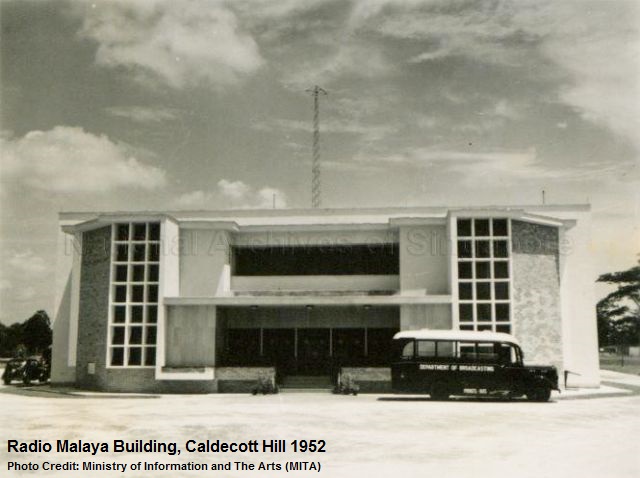
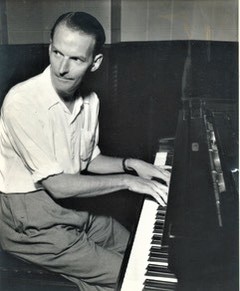
The press coverage for William Rea’s arrival in Malaya was certainly informative. The Composer in Malaya article had filled in his biographical details. It was followed by a feature in April on his composing and his musical likes and dislikes at that time, entitled ‘A New musical “Language”’, The Singapore Free Press, 23 April 1952.
His family had not yet found a place of their own.
Living, however temporarily, in a hotel, along with his busy job, was making it impossible to compose, though ‘he is at present at work on a fairly long work for string orchestra and has reached the third movement’.
As the Acting Music Supervisor at Radio Malaya, his job was arranging ‘the music side of programmes’, writing scripts for gramophone recitals, holding auditions, and every fortnight giving piano recitals.
Described as an uncompromising ‘disciple of the 12-tone technique in which composers like Schoenberg and Berg have expressed their ideas’, Rea ‘recommends as a beautiful 12-tone composition the Elegy for Strings by Ernst Krenek, a modern for whom he has a great admiration’.
Peter Racine Fricker is another of his heroes though he can be ‘too serious all the time and should relax a bit’.
Stravinsky and Bartók, exasperate him – ‘they had betrayed their faith’.
His ‘favourite pre-composer is Ravel … Bach stands high in his estimation’. He dislikes ‘programme’ music and most of all Richard Strauss’s Till Eulenspiegel.
The full article is worth reading – see this PDF:

|
New Musical Language 1952.pdf Size : 174.339 Kb Type : pdf |
The occasional newspaper report provides glimpses of Rea’s activities over the following years, though there is little or no mention of new compositions.
An overview of 1952 would include a public recital with free tickets by soprano Minnie Iverson-Wood on Tuesday 3 June at 9.15pm in Radio Malaya’s auditorium. In language reminiscent of Belfast and St Enoch’s, ‘She will render four groups of songs and the programme will include piano solos by William Rea, Radio Malaya’s acting Music Supervisor.’ (The Straits Times, 22 May 1952, Page 4)
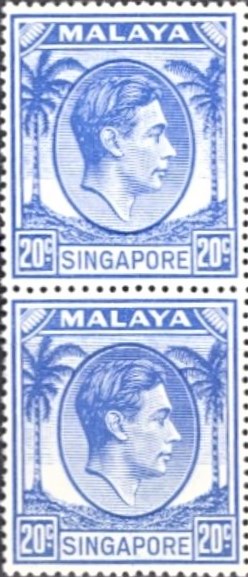
He took part in a fund-raising variety concert for the Scouts on Thursday 27 June at the Victoria Theatre.
One of his many broadcast piano recitals was given on Wednesday 13 August at 8.15pm.
And, like Havelock Nelson for the BBC in Belfast, William Rea was on call to accompany for broadcasts and other ‘outside’ events.
On Tuesday 14 October at 9.15pm he was accompanying two local musicians in Radio Malaya’s auditorium – Mrs Maria Lee-Howe Tay (soprano) and Miss Susheela Devi (violin).
Page 11 of The Straits Times, Sunday 26 October, announced that ‘Miss Lim Lee, the Singapore soprano who will leave for advanced voice study in Britain on Thursday, will give a final recital at the Victoria Theatre at 8.45pm today. Mr. William Rea will be at the piano.’
The following week, Sunday 2 November, The Straits Times on page 14 noted that ‘The theatre was packed and many people were turned away. … Smoothly accompanied by Radio Malaya’s William Rea, Miss Lim sang groups of songs in English, Mandarin and Italian. Her best was perhaps “Solveig’s Song” by Grieg and Verdi’s “Beloved Name”. …’
More to follow in due course - Work in Progress!